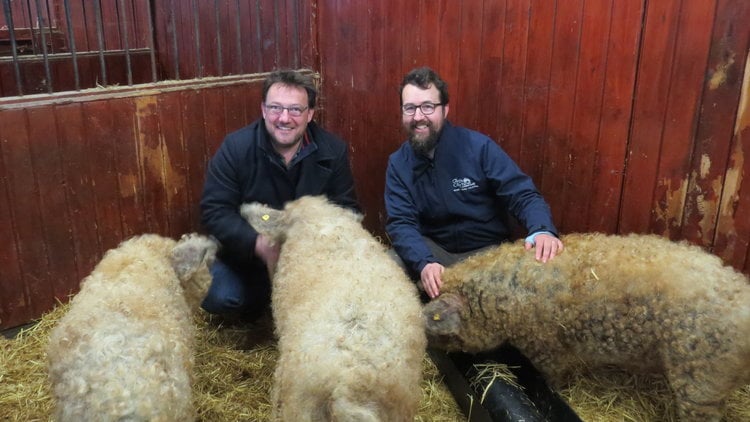
Gourmets have long gone wild for Wagyu beef. Will they go mad for Mangalitsa pork? Chef Fred Berkmiller hopes so as he starts breeding rare Mangalitsa pigs in Scotland for his l’escargot restaurants.
From French horsemeat to snails from Barra, Chef Patron Fred Berkmiller has long taken an adventurous approach to the menus in his l’escargot bleu and blanc restaurants in Edinburgh.
His latest venture is a partnership with Gorgie City Farm which, in a few weeks, will result in Mangalitsa pork on his menus.
Rare breed pig
If you have never heard of Mangalitsa or Mangalica pigs, it is because very few people have. Interest in them is growing but, at one point, they were so rare, that there were only 150 of them in existence. That looks set to change.
Mangalitsa have been described as the Wagyu beef of pork and, like Wagyu, their flesh has a lot of marbling running through it. Originally from Hungary, their name in Hungarian means ‘hog with a lot of lard’ and it is this fat which makes the meat succulent and richly flavoured.

Regular readers will know that Fred likes to use richly marbled Wagyu beef from the Highland Wagyu farm in Perthshire. The thought of cooking its porcine equivalent has Fred licking his lips:
‘With their eye-catching woolly appearance, they look more like sheep than the pink-skinned pigs we are used to seeing. They certainly look exotic.
‘Striking as the looks are, they are not what interests me as a chef. Like most chefs, my first thought on encountering a new product is “what does it taste like?” closely followed by “How would I cook that?”‘
Fred has yet to try the meat but Josiah Lockhart, the General Manager of Gorgie City Farm, has. He describes it as dark red in colour with intense marbling. The texture is tender and soft while the flavours is said to be like beef but with a slight sweetness.
Mangalitsa tell story of Scottish agriculture
Looking after the Mangalitsa at the free-to-enter Gorgie City Farm is a win-win situation for Fred and Josiah.

‘One of the things that we have been doing at the farm recently is to tell the story of Scottish agriculture,’ says Josiah. ‘The last indigenous Scottish pig, the Grice, became extinct around the 1920s. The Grice was closely related to the Northern European Wild Boar and had originally been brought to Scotland from what we now call Scandinavia as far back as 4000BC.
‘As Mangalitsa are related to the Northern European Wild Boar, it seemed apt to start farming them here. The story of Scotland’s agriculture always had more in common with northern Europe than it did with England or France. Keeping Mangalitsa is one way of telling that story.
Kids love Mangalitsa
‘It is a great product in terms of the meat but it is also ideal for the farm. It is something unusual and the parents and kids love it. The farm always needs more visitors and the Mangalitsa are one way of bringing them in.’
Fred is just as enthusiastic about working with the Mangalitsa meat:
‘We get very excited in the kitchen when we have an interesting new product to work with and we know that our customers are very open to trying new things.’
Other chefs are also showing an interest.
‘News travels fast in the restaurant world and we have already had lots of other chefs getting in touch to ask where they can get Mangalitsa,’ says Fred. ‘Not many people have heard of it. Yet. But those who do know what it is want it.’
The 5pm Dining blog will let you know when the pork goes on the menu.
